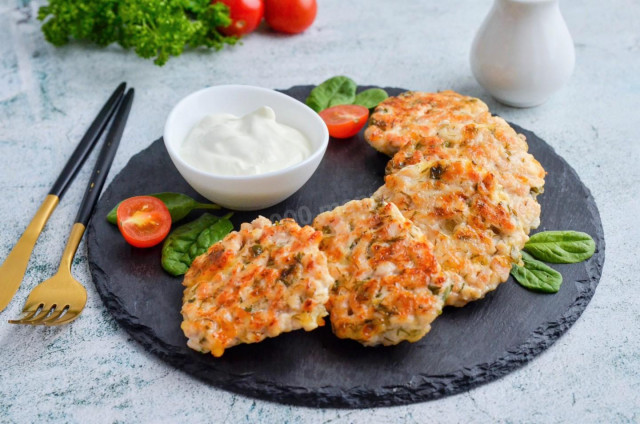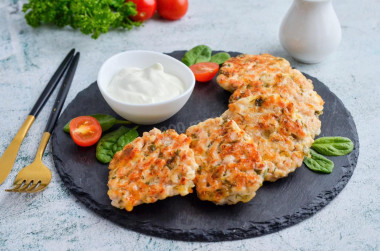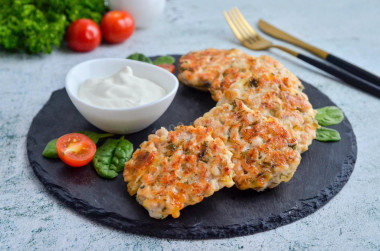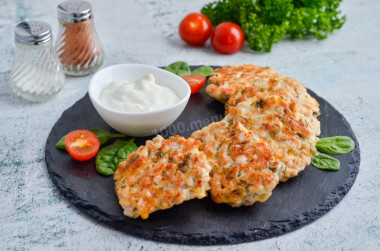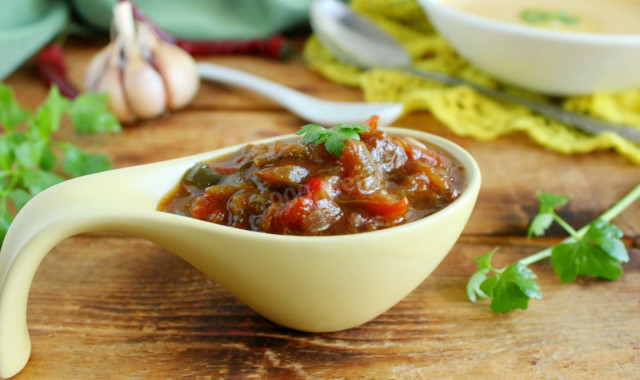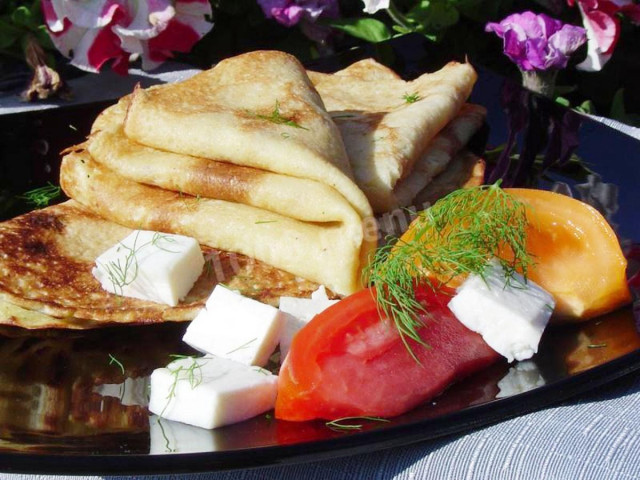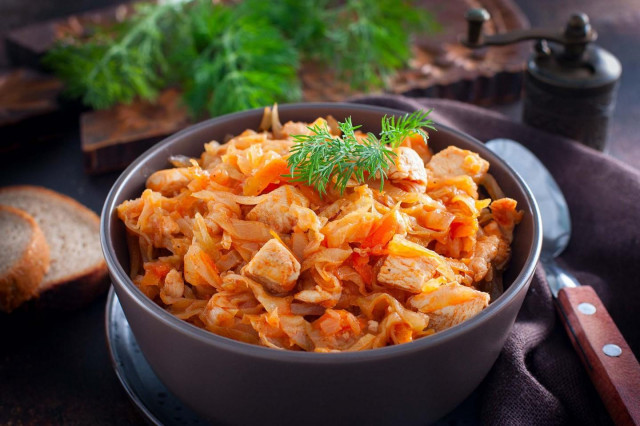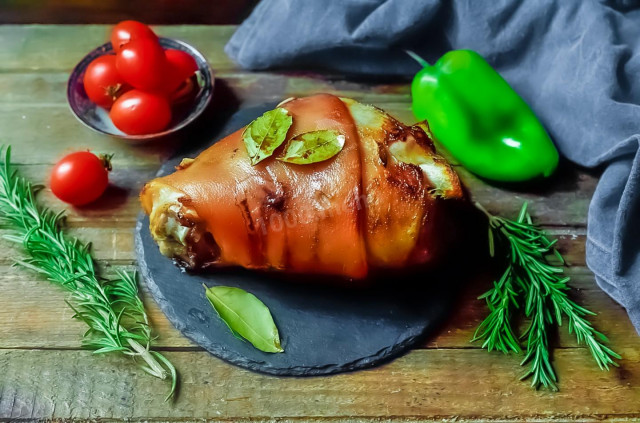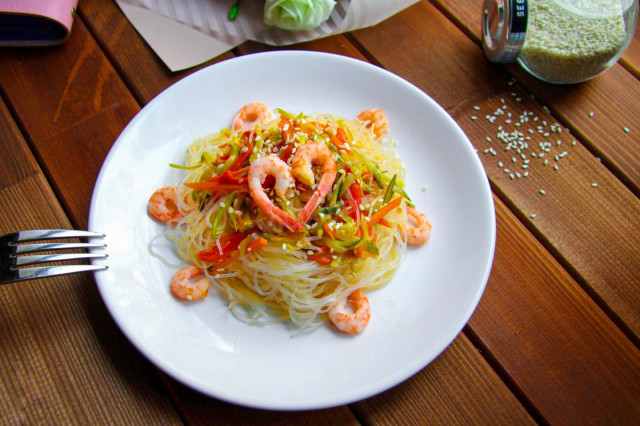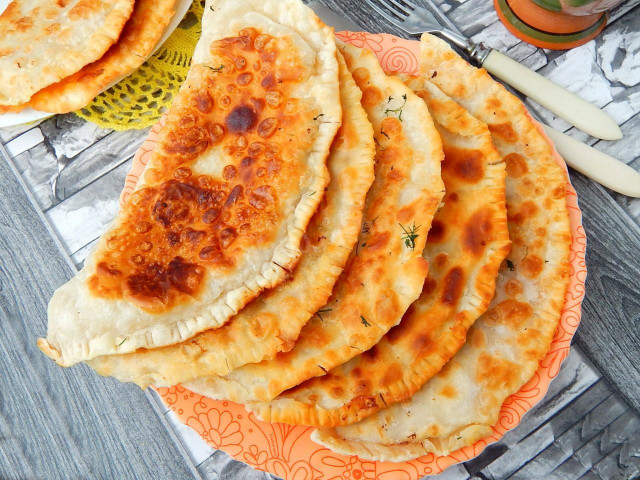Composition / ingredients
Step-by-step cooking
Step 1:
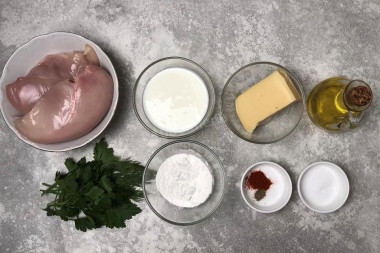
How to make chopped chicken cutlets with cheese? Prepare the products. For this recipe, the breast or thighs of a chicken are best suited, the meat from it is the softest and cooks quickly. You will need just one breast or two fillets. You can take any cheese, it doesn't matter. Kefir can be replaced with a combination of kefir + mayonnaise. Greens will suit any favorite of yours, as well as spices. I have dill/parsley and red/black peppers.
Step 2:
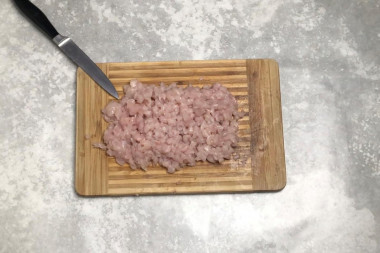
Wash the fillets and dry them well. Cut it into very small cubes. To do this, first cut the meat into thin plates, which, in turn, into strips, and then into cubes. It actually won't take as long as it seems, the main thing is to sharpen the knife well.
Step 3:
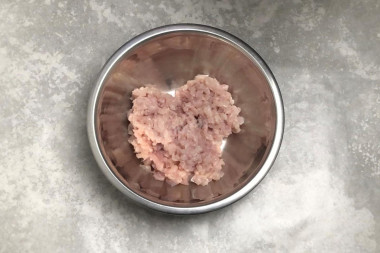
Fold the sliced fillets into a bowl.
Step 4:
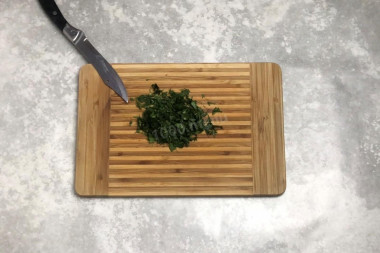
Wash the greens well, dry them. Chop it finely with a knife.
Step 5:
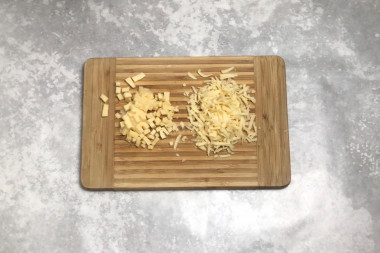
Divide the cheese in half. Cut one half into cubes, grate the other on a coarse grater. This is done so that the cheese melts better, but still large pieces remain. If you use soft cheese like cheese, then just cut it, do not rub it.
Step 6:
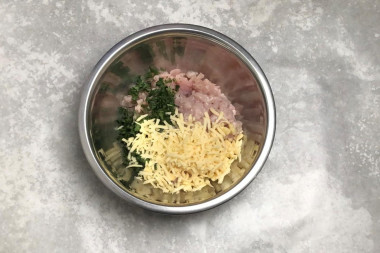
Add greens and cheese to the meat. If desired, at this stage, you can add chopped onion or garlic to the minced meat.
Step 7:
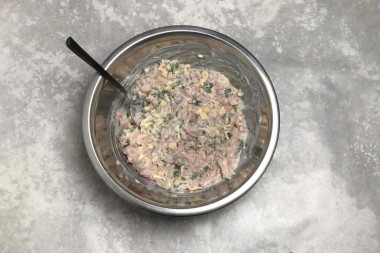
Add starch to the minced meat. Pour in the kefir. Season with salt and spices. Be careful with the salt. Adjust its amount according to the amount and salinity of the cheese. Mix the minced meat well. It should turn out to be quite thick and viscous due to starch and kefir. If the minced meat does not stick together, then add an egg to it.
Step 8:
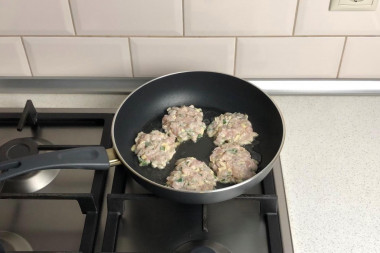
Preheat a frying pan with a thick bottom. It is better to fry on this one - it warms up evenly and keeps warm, which allows the products to fry better. I use non-stick coating. Pour vegetable oil into the pan. Spread the minced meat on it with a tablespoon, forming round cutlets from it. You can make them with your hands, but I'm used to doing it with a spoon. Please note that there is no need to bread the cutlets.
Step 9:
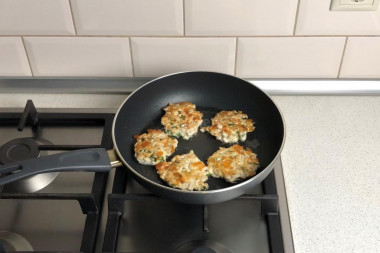
Fry the cutlets over medium heat until golden brown, about 5 minutes. Then flip to the other side. In the process, I covered the pan with a lid so that the meat had time to cook.
Step 10:
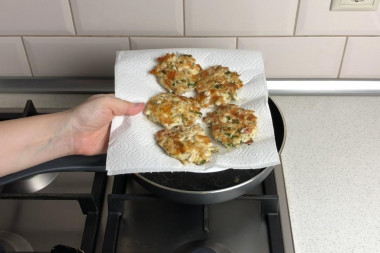
Remove the finished cutlets on a plate with a paper towel, which will absorb excess fat. Serve the cutlets hot with any side dish. A sauce based on sour cream or yogurt will suit them well. From this amount of products, about 10-12 cutlets are obtained, depending on their size.
Many people know the recipe for minced meat cutlets made with a knife. They are prepared quickly and simply. In this dish, cheese is added to the meat, which, when melted, makes the cutlets juicy and adds a piquant note to their taste.
I very often cook such chopped cutlets, we call them rasters. But I cooked with cheese for the first time. It turned out very tasty with him! It melted and gave the cutlets juiciness and sharp taste.
Wash the meat, be sure to dry it with a paper towel, otherwise excessive moisture will not allow it to fry - it will stew.
Use oil with a high smoking temperature for frying! Any oils are useful only until a certain temperature is reached - the point of smoking, at which the oil begins to burn and toxic substances, including carcinogens, are formed in it.
Unrefined oils, with rare exceptions, have a low smoking point. There are a lot of unfiltered organic particles in them, which quickly begin to burn.
Refined oils are more resistant to heating, and their smoking point is higher. If you are going to cook food in the oven, on a frying pan or grill, make sure that you use oil with a high smoking point. The most common of the oils with a high smoking point: refined varieties of sunflower, olive and grape.
Caloric content of the products possible in the composition of the dish
- Dutch cheese - 352 kcal/100g
- Swiss cheese - 335 kcal/100g
- Russian cheese - 366 kcal/100g
- Kostroma cheese - 345 kcal/100g
- Yaroslavsky cheese - 361 kcal/100g
- Altai cheese 50% fat content - 356 kcal/100g
- Soviet cheese - 400 kcal/100g
- Cheese "steppe" - 362 kcal/100g
- Uglich cheese - 347 kcal/100g
- Poshekhonsky cheese - 350 kcal/100g
- Lambert cheese - 377 kcal/100g
- Appnzeller cheese with 50% fat content - 400 kcal/100g
- Chester cheese with 50% fat content - 363 kcal/100g
- Edamer cheese with 40% fat content - 340 kcal/100g
- Cheese with mushrooms of 50% fat content - 395 kcal/100g
- Emmental cheese with 45% fat content - 420 kcal/100g
- Gouda cheese with 45% fat content - 356 kcal/100g
- Aiadeus cheese - 364 kcal/100g
- Dom blanc cheese (semi-hard) - 360 kcal/100g
- Lo spalmino cheese - 61 kcal/100g
- Cheese "etorki" (sheep, hard) - 401 kcal/100g
- White cheese - 100 kcal/100g
- Fat yellow cheese - 260 kcal/100g
- Altai cheese - 355 kcal/100g
- Kaunas cheese - 355 kcal/100g
- Latvian cheese - 316 kcal/100g
- Limburger cheese - 327 kcal/100g
- Lithuanian cheese - 250 kcal/100g
- Lake cheese - 350 kcal/100g
- Gruyere cheese - 396 kcal/100g
- Kefir fat - 62 kcal/100g
- Kefir of 1% fat content - 38 kcal/100g
- Low-fat kefir - 30 kcal/100g
- Kefir "doctor beefy" 1,8% fat content - 45 kcal/100g
- Kefir 2.5% fat content - 53 kcal/100g
- Starch - 320 kcal/100g
- Vegetable oil - 873 kcal/100g
- Salt - 0 kcal/100g
- Spices dry - 240 kcal/100g
- Fresh frozen soup greens in a package - 41 kcal/100g
- Greenery - 41 kcal/100g
- Chicken breast (fillet) - 113 kcal/100g

